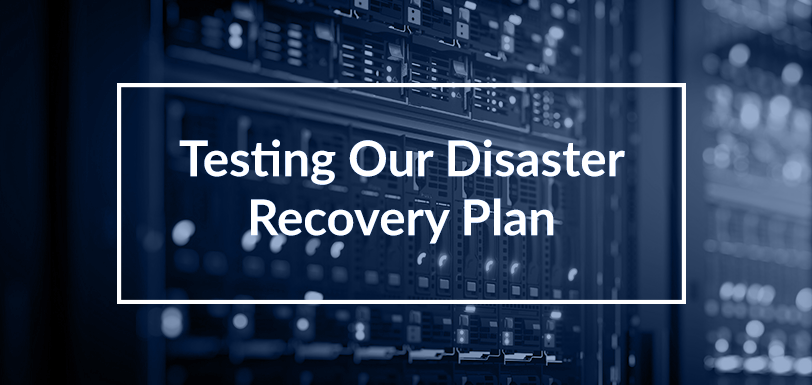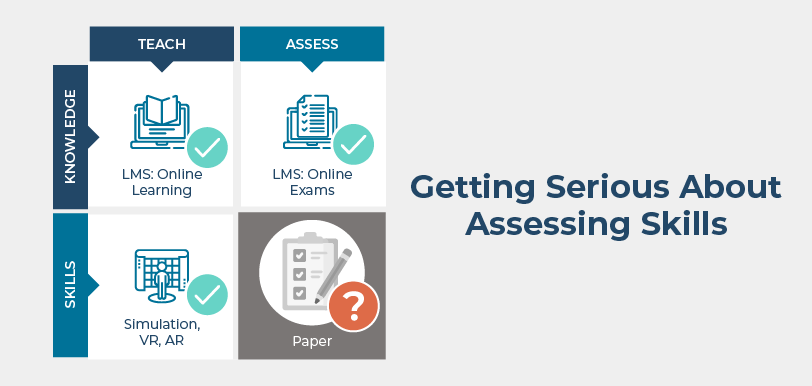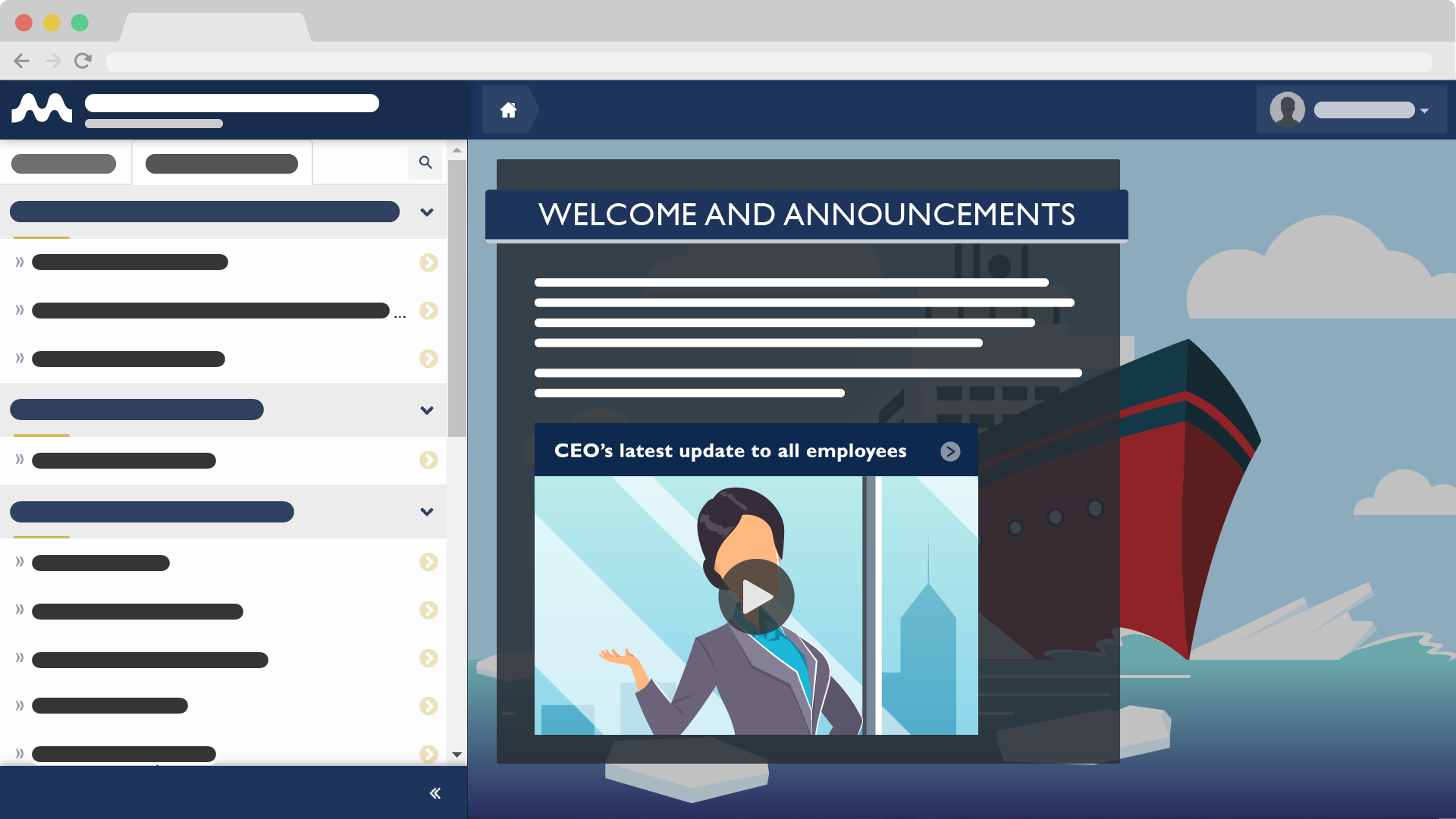Does eLearning Work in the Maritime Sector?
Oct 25, 2017 Murray Goldberg 0 eLearning, Maritime TrainingKnowledge is Power (and Progress)
As a former academic, I have always been taught to look at any new information with a critical eye. Critical in the sense that it is important to question everything. However, once a question has been carefully analysed and a reliable answer has been found, it is time to begin asking the next series of important questions. Otherwise, we are stuck revisiting questions we already have answers to, and progress is stymied.
This is the current situation in some parts of the maritime industry surrounding the question of whether eLearning works. Arguments on both sides often cite personal anecdotes and opinions, when we already have solid answers informed by real research.
We need to disseminate more broadly what is already known about eLearning. This way, the maritime community can move on to the truly unanswered training questions which need attention. Questions like how to best blend learning experiences, how to cross cultural and language barriers in training, how to enable vessel operators with tight budgets to instill a culture of safety and more.
To that end, this article will revisit the topic of whether eLearning works.
If you already know it works, you can stop reading here – I have said most of this before. However, if you are skeptical, even a little, I encourage you to read on. It is my hope that once you have seen the compelling evidence, you can use this knowledge to contribute to the unanswered questions critical to the future of training in the industry. At the very least, it will give you some facts to refer to next time you encounter the statement “eLearning can’t work in the maritime industry”.
Let’s start with some quick answers and then present some of the most compelling evidence.
The Quick Answer
Does eLearning work?
The answer is “yes”.
However, there are many parts to that answer. And the more that we understand, the better was are equipped to use eLearning in a way that exploits their strengths and accommodates their limitations. So here are a few quick, but very important considerations:
Not All eLearning Experiences are Equal
Neither are all classroom experiences. Taking a poor training experience and putting it online only creates a poor online training experience. There are excellent and poor examples of both online and classroom-based training. We don’t abandon the classroom just because we had a terrible instructor once. We should not abandon eLearning just because there are examples of poor online learning.
There is a Difference Between Knowledge and Skills
Maritime industry workers require both knowledge and skills to do their jobs safely and efficiently. It is important to realize that effective training techniques for knowledge are not the same as those for skills. Having said that, all skills are built on a foundation of knowledge. Even if you believe you are only teaching a skill, there is always a strong knowledge component behind that training. Both must always be considered.
Blended is Best for Knowledge
The evidence will be presented below, but here is the quick fact. When comparing online learning (eLearning) with classroom-based learning, both are roughly equal for teaching knowledge. In fact, eLearning offers a slight advantage.
More importantly, if you combine online and face-to-face training (a technique called “blended learning”), you get significantly better training outcomes than if you employed either styles of training alone. This is gives us an opportunity to make real training improvements and take maritime training to the “next level”.
Blended is Best for Skill
Since blended learning is best for teaching knowledge, it is also the best way to teach the knowledge which underlies the skills mariners need.
For the practical aspects of skills, simulations and serious games offer the opportunity to present scenarios to the trainee that could never be replicated in hands-on training. Therefore blending eLearning, simulations and hands-on training together provides the best skill training outcomes.
There is No Replacement for Hands On Training
This is one of the most common arguments I hear against online learning. I believe that the statement is completely true.
However, it is in no way an argument against online learning.
Hands-on training for skills provides the context, experience, environment and tactile feedback that a simulation can never fully match. However, simulations provide variety in, and control of, the training scenario that hands-on training can never match. Taken together, it’s clear that each approach offers something the other one does not. That is why combining techniques is so powerful – better than either one alone.
This argument is true for nearly all training techniques. Rather than using one in isolation or discounting a technique outright, the goal should be to understand the characteristics of each and then design a training approach which takes advantage of each one’s strength. Using multiple, complementary approaches yields excellent results.
Technology Offers Some Unique Benefits
Aside from training excellence, technology yields benefits not available otherwise.
For example, eLearning systems are excellent at providing deep learning metrics and analytics. This is real-time data about how well your trainees are performing and where the gaps are. This allows you to continuously improve training and close gaps in training outcomes before they become safety or performance issues.
Technology can also improve access to training. It can bring training to those who might not otherwise have any opportunity. It allows you to create a more flexible training delivery model. A very common and highly effective approach is having trainees pre-train remotely using eLearning. They can then converge at a central location for a shorter, more effective (and cheaper) face-to-face experience.
There are many other quick important facts on the subject. But for now I will turn to the evidence which supports many of the assertions above.
The Evidence
For evidence on this subject, I am going to turn to an article I often reference. So if this sounds somewhat familiar, it is. However, it is so important, I am going to include it here:
The best evidence for eLearning that I am aware of is a report published in 2010 by the U.S. Department of Education (US DOE). The strength of this report comes from the fact that it is a meta-analysis. This means that it is not a single study on eLearning effectiveness. Instead, this meta-analysis looks at a large number of independent studies and research projects which try to answer the question – does eLearning work? It then draws a conclusion based on the strength of the widest possible breadth of investigations. This is very powerful because any biases or study flaws are quickly filtered out.
The US DOE meta-analysis came to several conclusions. I encourage you to read the full report yourself, since there are many useful nuances which will provide a greater understanding of eLearning effectiveness. Let’s look at some of the most notable conclusions:
Conclusion number 1: Online learning outperforms face-to-face learning:
“Students in online conditions performed modestly better, on average, than those learning the same material through traditional face-to-face instruction.”
The difference in effectiveness between online and face-to-face instruction was quite small. Thus, I have always considered the learning effectiveness between online and face-to-face to be roughly equivalent.
We can say unequivocally that online learning does not produce inferior outcomes when compared to face-to-face instruction, as many incorrectly believe.
Conclusion number 2: Blended learning is best:
“Instruction combining online and face-to-face elements had a larger advantage relative to purely face-to-face instruction than did purely online instruction.“
Blended learning is the technique of combining learning modes – in this case online learning and face-to-face learning. The conclusion above states that when you blend learning modes, the outcomes are better than for either face-to-face or eLearning alone. This makes intuitive sense because each technique has strengths the other one cannot offer. Therefore combining them yields better results.
The take-away here is clear. If your goal is to provide the very best training possible, you should use a combined approach involving both face-to-face training and eLearning.
Conclusion number 3: Interaction with peers and/or instructors improves learning outcomes:
“Effect sizes [i.e. the improvement in learning outcomes] were larger for studies in which the online instruction was collaborative or instructor-directed than in those studies where online learners worked independently.”
One of the major advantages to online learning is its ability to connect people to one another. It facilitates informal learning by connecting trainees – allowing them to learn from one another in a way that face-to-face training can’t.
In addition, online learning can be facilitated by an instructor and outcomes are improved. Therefore, although it is effective for trainees to learn online independently, the best outcomes are achieved when we use technology to connect people. This further facilitates the learning process.
Conclusion number 4: Blending and connecting are the most important considerations:
“Most of the variations in the way in which different studies implemented online learning did not affect student learning outcomes significantly … Of those variables, the two mentioned above (i.e., the use of a blended … or collaborative … instruction) were the only statistically significant influences on effectiveness.”
There are many different ways in which we can deliver eLearning. One of the variables we hear about is the media type – the choice between text, videos, audio, etc. However, the US DOE study found that once eLearning is employed, only two variables (blending learning modes and connecting trainees to others) created a significant improvement in learning outcomes.
It was found that substituting one media type for another (e.g. video for text) made no significant difference in outcomes. So, while there are clearly situations where one media type is preferable over another, this conclusion tells us that aside from these special situations, it is safe to choose media based on what is economical to create and maintain.
Conclusion number 5: eLearning works, regardless of the subject matter:
“The effectiveness of online learning approaches appears quite broad across different content and learner types.”
eLearning has been around and studied long enough that we can safely conclude that it is effective for all kinds of knowledge acquisition. There is nothing special about maritime knowledge or learners that makes the field immune to the benefits of eLearning.
That is not to say that there are no hurdles to overcome in maritime eLearning – there are. For example, the availability of internet on-board, and the sophistication of vessel based training have slowed the adoption of eLearning in the industry. However, those obstacles are largely overcome by maritime-specific learning management systems (LMSs) and the industry is following suit by adopting eLearning methods. This study makes it clear that the benefits of eLearning are not domain-specific.
Conclusion
In an article full of conclusions, there is little to add in “the conclusion section”. However, to sum it up: eLearning works. It has strengths which create an opportunity to do better than before. It is not a replacement for hands-on training – that is the wrong discussion to have, because we already know the answer. The real discussion is how we apply the strengths and advantages that eLearning brings to an industry that is in need of better (not more) training, more uniform training, and an elevated discussion on what we can do to achieve these.
Follow this Blog!
Receive email notifications whenever a new maritime training article is posted. Enter your email address below:
Interested in Marine Learning Systems?
Contact us here to learn how you can upgrade your training delivery and management process to achieve superior safety and crew performance.






